A combo chart is a visualization comprised of two or measures within the same plot area. These charts are different from multi-metric charts (such as a scatter plot), where data is plotted on the x-axis, the y-axis and the z-axis (when appropriate), each having different data points and values.
Combo charts are useful when you need to plot two or more disparate measures from the same query in the same plot area. Each value can be displayed as a different chart type on its own y-axis with its own scale. It is one of the various techniques of manipulating the values in a visualization to produce different effects.
- To learn how to display multiple measures on the same axis (primary axis), click here.
You can use this method to compare measures for a given hierarchy, for example Sales and Returns by Manufacturer:

This method can also be used to compare multiple measures for multiple hierarchies, for example Net Profit and Returns by Gender and Manufacturer:

The charts can also be trellised by adding a second member hierarchy to a trellis zone, to create multi-combo charts, for example, Sales and Net Profit by Promotion Type, for each Manufacturer.
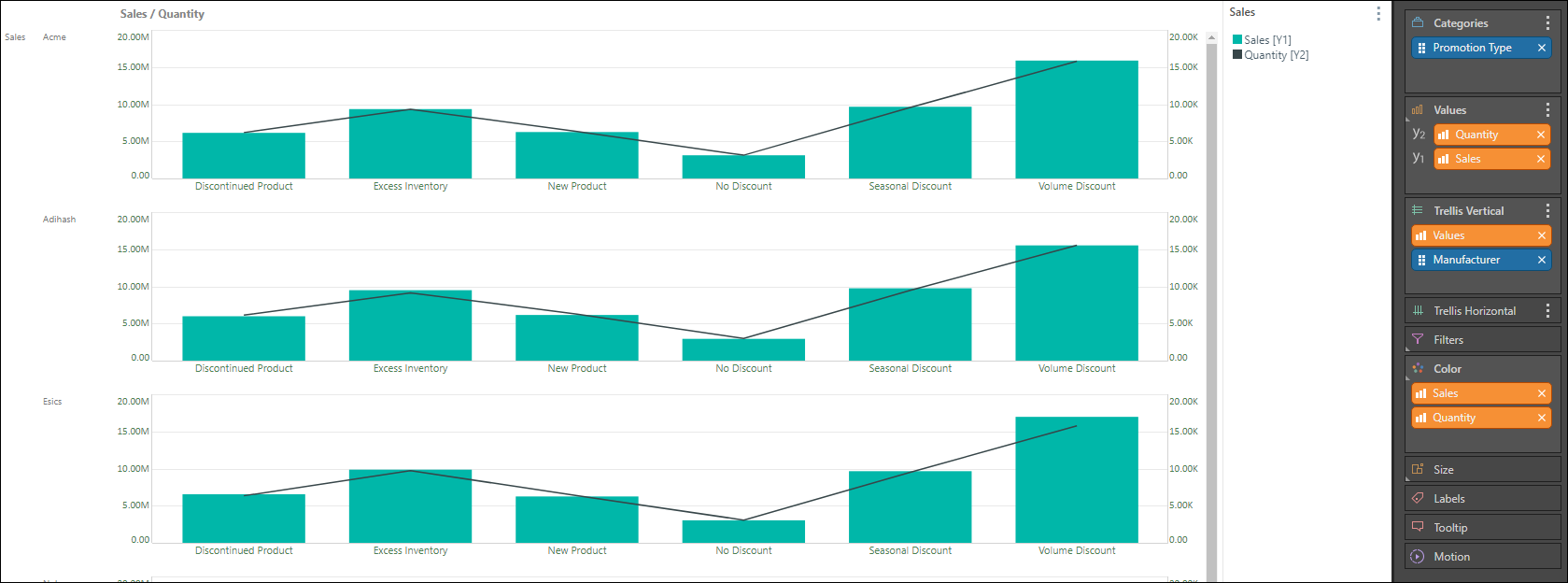
Chart Types
You can create a combo chart when working with the following visualizations:
How to Add Multiple Measures to a Chart
When adding multiple measures to a chart, the chart will automatically be trellised into multiple charts.
Cartesian Charts
- To display multiple measures in a single chart, drag the second measure to the Values zone.
- The pop-out menu will display two options: primary axis and secondary axis.
- Primary axis: use this option to display multiple measures on the same y-axis (y1)in a single chart.
- Secondary axis: use this option to display a second measure on a secondary y-axis (y2), on the right hand side of the chart.
- Drag the measure over the required axis option, and in the next pop-out menu, drop the measure onto zone representing the required chart type and axis (see 'Multiple Values for Trellised Charts' below).
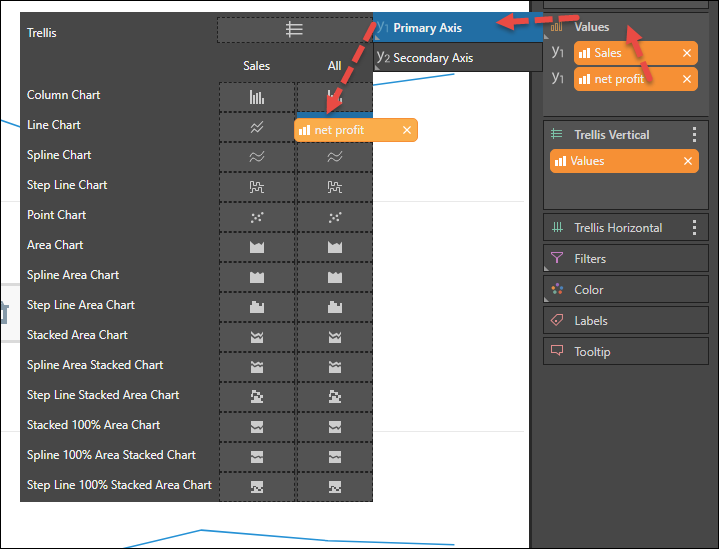
Scatter and Bubble Charts
Follow the same steps as those listed above for Cartesian charts, but at Step 1, add the additional measure(s) to the Y-Values drop zone:
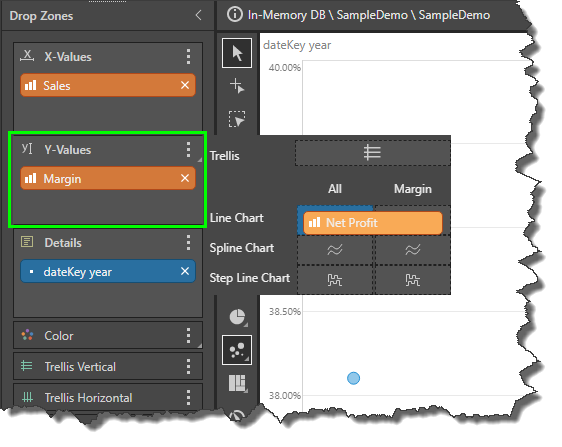
In the example below, a third measure was added to the Y-Values zone to create a combo chart:
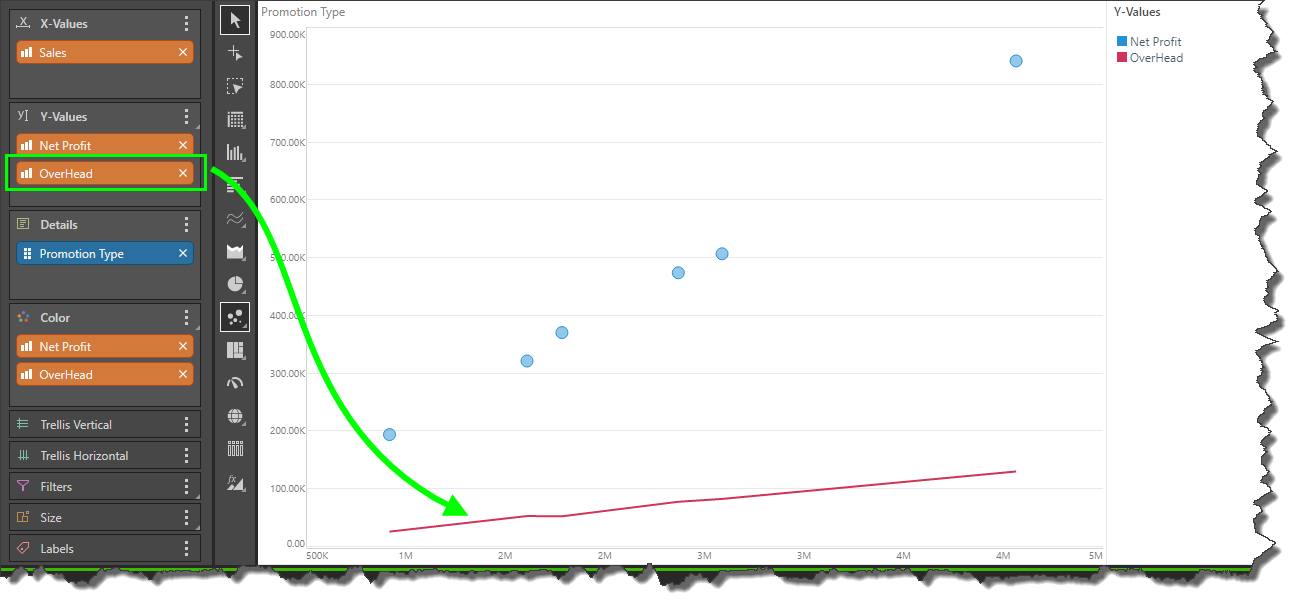
Multiple Values for Trellised Charts
When adding a primary or secondary axis, the sub-menu will display multiple columns; the first is labeled 'All' and the rest are labeled according to the existing measures in the Values drop zone.
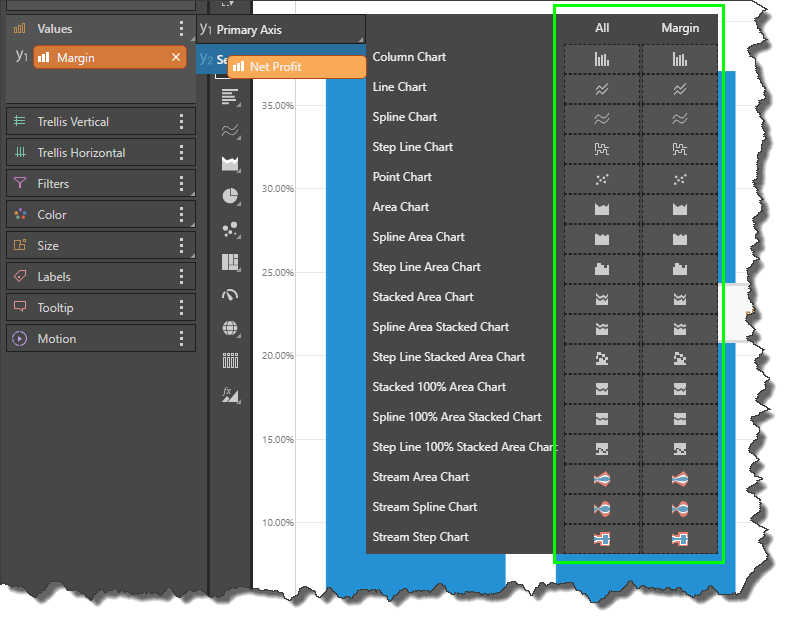
The purpose of these columns is to allow you to specify a measure when you are working with trellised charts. If your chart contains only 1 measure in the Values zone, then it doesn't matter to which column you add your additional measure(s). But if the values zone contains multiple measure, producing trellised charts, you have the option to determine which charts will be converted into a combo chart.
In the example below, the chart is trellised by 3 measures: Margin, Net Profit, and Expenses. A fourth measure, Sales, as added to the Secondary Axis. It is added to the Spline Chart visual for the Net Profit column (red highlight):
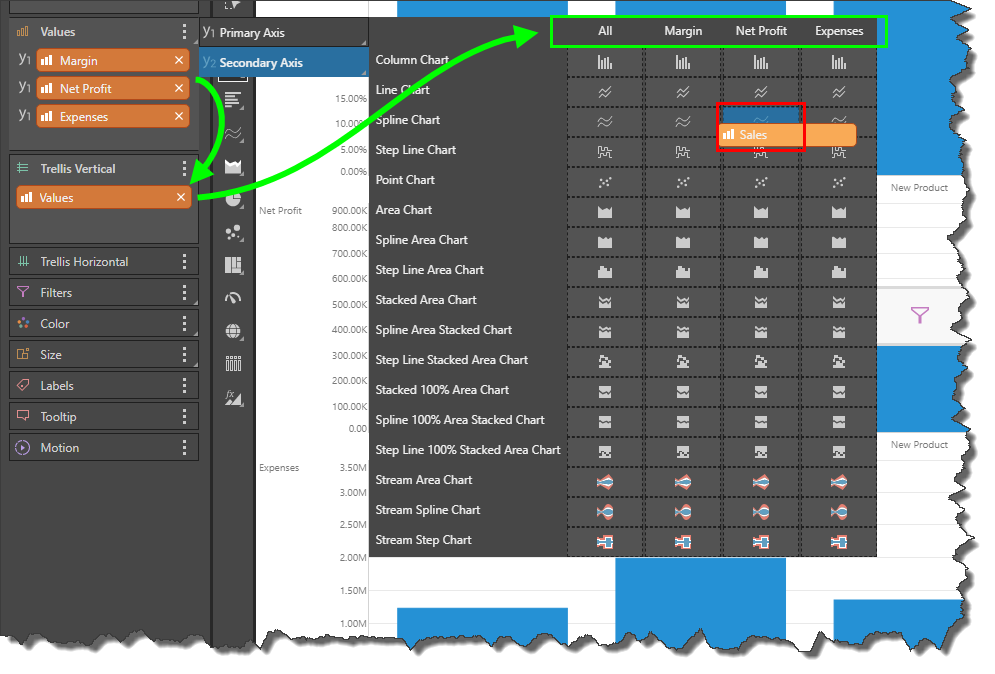
The result is that only the Net Profit chart was converted into a combo chart, while the other 2 were not affected:
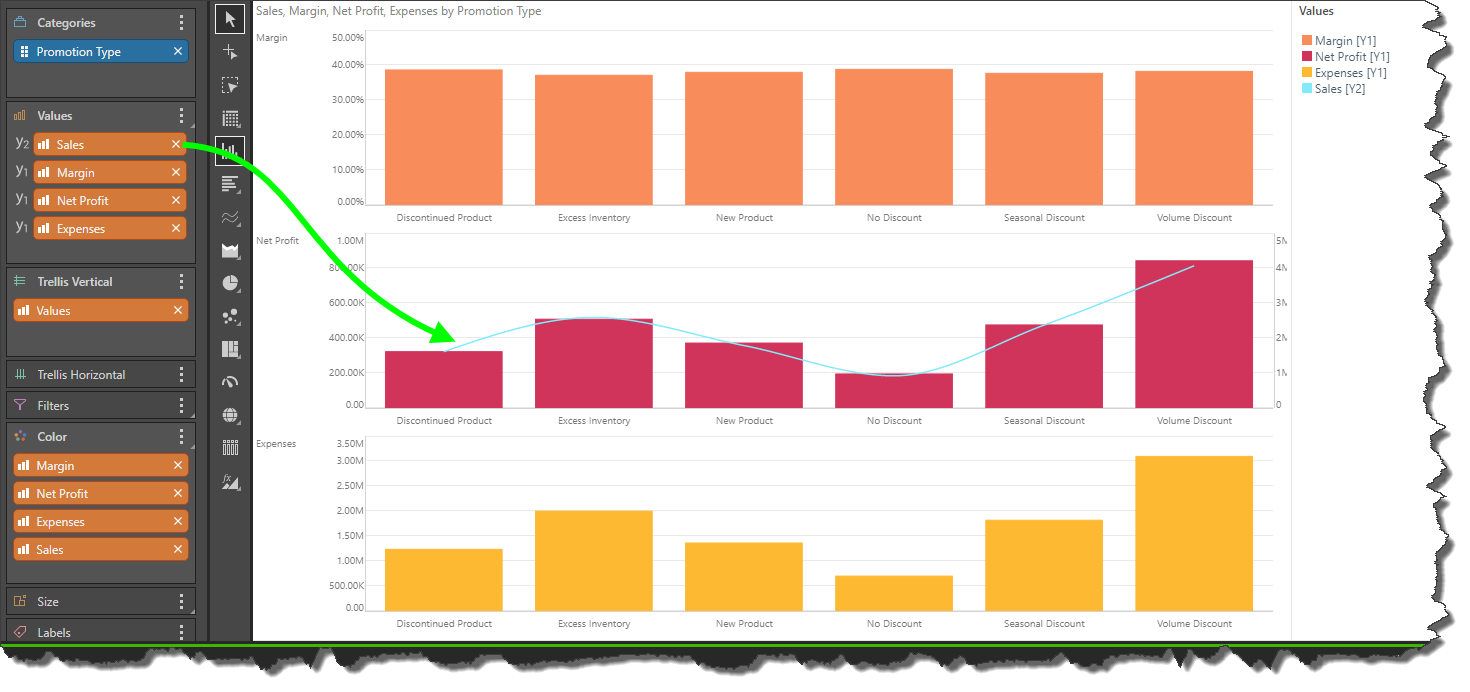
In this example, the Sales measure was added to the 'All' column, converting all of the trellised charts into combo charts:
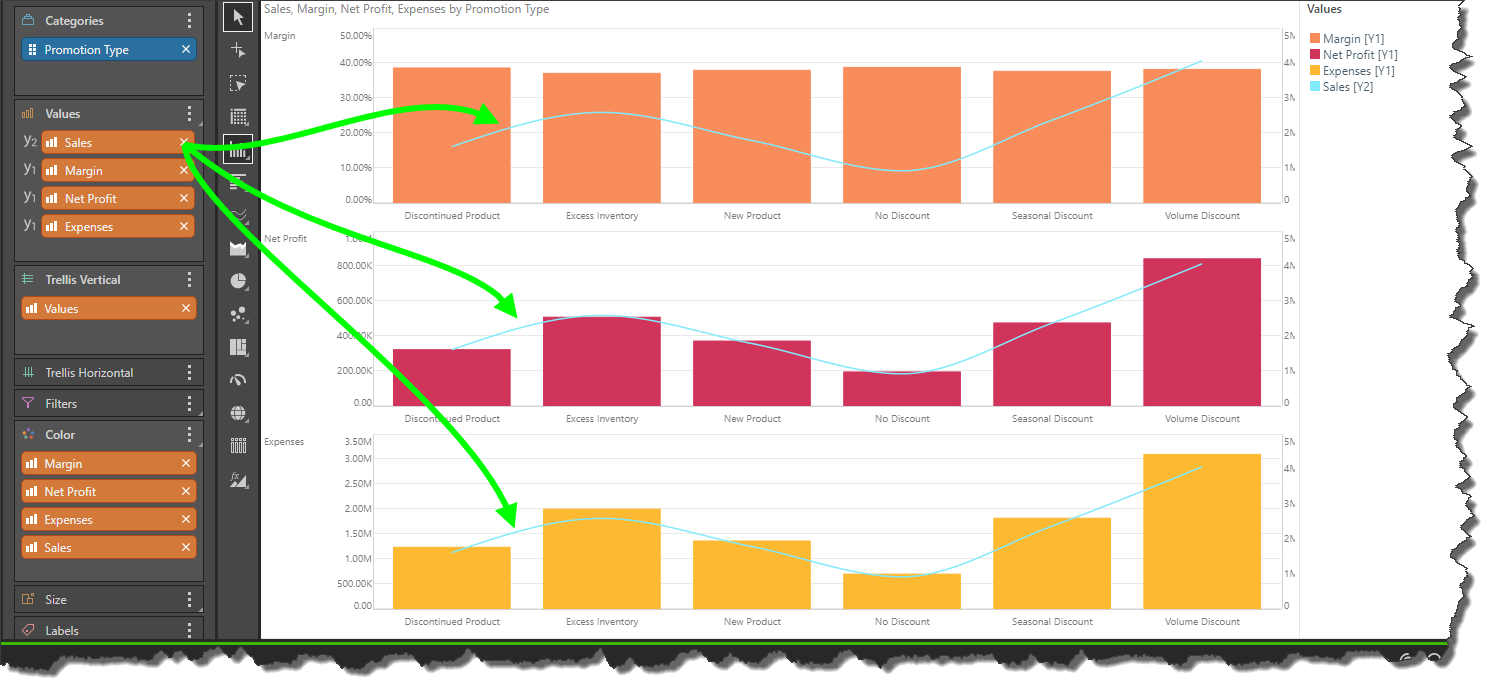
Chart Order
When adding a primary axis, its corresponding chart is moved to the back (it appears "behind" the existing chart). You can change the order of the chips within the Values zone in order to reorder the charts. For instance, if the secondary axis is represented as a line chart, move its chip to the top of the Values zone (red arrow below) so that the line chart will be in front of the existing chart.
